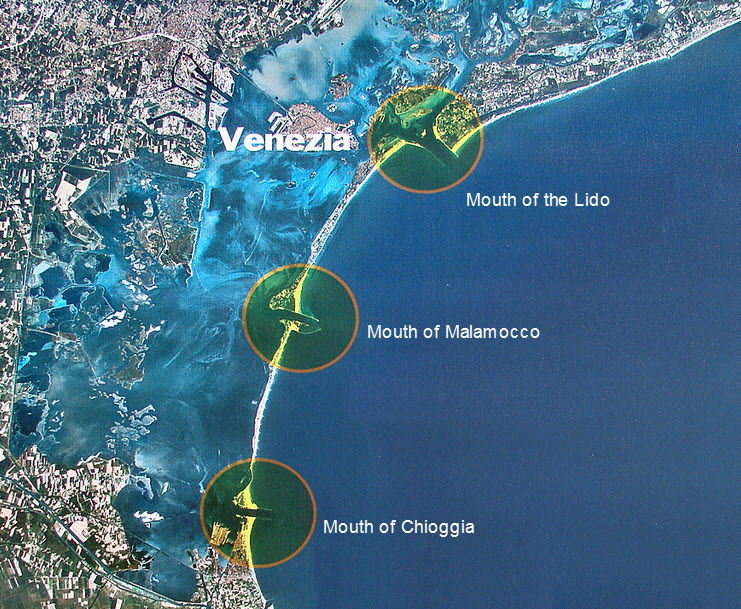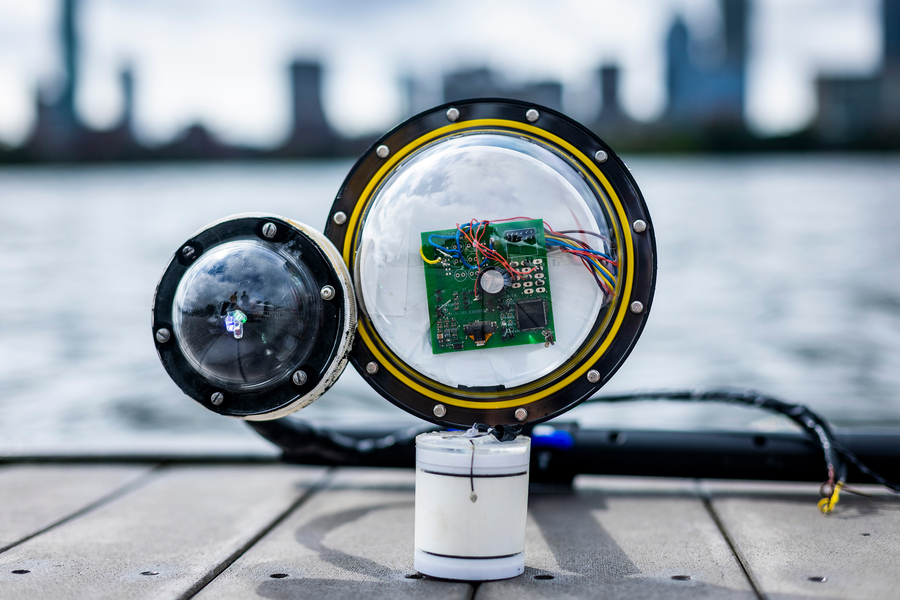The MOSE (MOdulo Sperimentale Elettromeccanico) Project in Venice, Italy is the city’s attempt to address the ever threatening problem of mass flooding that could hit the city. The project first started as far back as 2003 and has stalled and recommenced a number of times, but is scheduled to be completed in 2014. MOSE is headed up by Italian car manufacturer Fiat and is a staggering $6 billion project aimed at saving one of Europe’s most culturally rich cities.
The city is located inside a lagoon before the Adriatic Sea, and as a result, the city is subject to an average of 100 floods a year and the ever worsening problem of climate change is resulting in higher water levels and a growing threat to Venice.
The vast floodgates are built to rise up from under the sea, thus creating a massive wall separating the lagoon and the city from the dangerous waters of the Adriatic Sea. There are three lagoon inlets that need to be reinforced – Lido, Malamocco and Chioggia. It is hoped that by 2014, engineers will have successfully completed the floodgates to effectively curtail dangerous flooding in the city. There will be 78 high walled floodgates, connected to bulky pillars lodged in the seabed, which will block the sea’s high tides during the year.
The project is in urgent need of completion as the city of Venice continues to sink slightly every year and the water levels are only rising. John Keahey is the author of the book Venice Against the Sea: A City Besieged who states that the city is in “serious, serious trouble” from the waters. “It’s in danger from high water, and increasing frequency of high water, and it’s in danger from out-of-control tourism.”
The MOSE project is not without its detractors though and criticisms have been made of the project’s potentially damaging effect to the lagoon’s ecosystem. According to marine scientists and environmentalists, the regularity of high tides means frequently closing the gates, which will keep the lagoon cut off from the sea for lengthy periods and disrupt the natural order, allowing the lagoon to become ‘stagnant’. However, the exact extent of damage potentially caused is yet to be determined but it continues to raise questions, with UNESCO (United Nations Educational, Scientific and Cultural Organization), admitting that flood control is vital, but “the impact of the industrial and agricultural activities, as well as hydrological changes in the surrounding area increases the uncertainty of the future quality of the Lagoon’s ecosystem”.
Meanwhile, other criticisms lumped on the MOSE project are of the vast sums of money being spent on the project with counter arguments stating that the saving of Venice will yield much greater socioeconomic returns in the long run.
Arguments aside, the MOSE Project remains an astounding engineering and construction work in progress.








